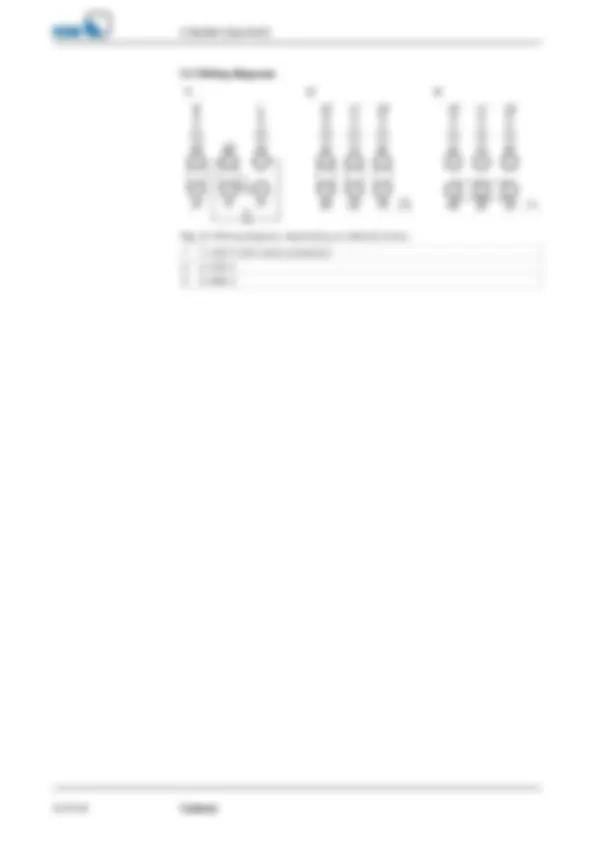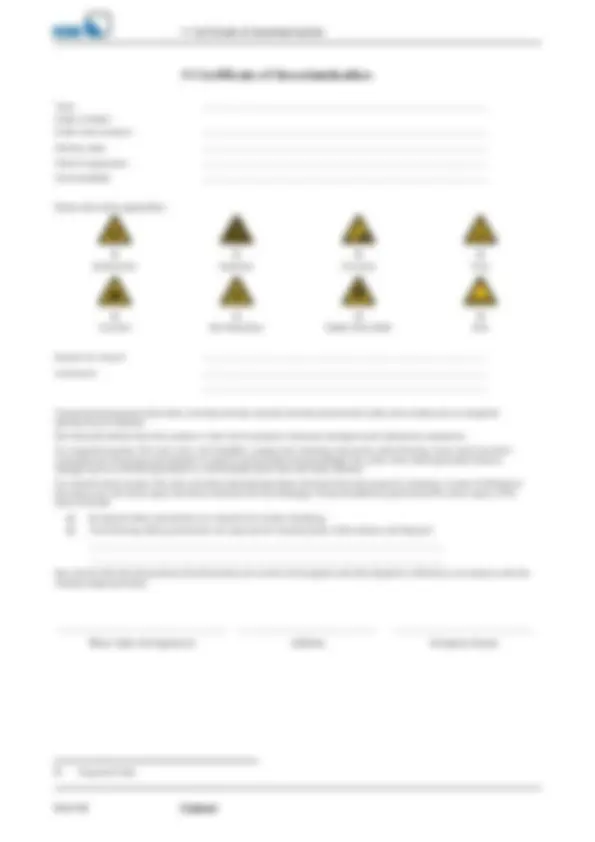






























Estude fácil! Tem muito documento disponível na Docsity

Ganhe pontos ajudando outros esrudantes ou compre um plano Premium


Prepare-se para as provas
Estude fácil! Tem muito documento disponível na Docsity
Prepare-se para as provas com trabalhos de outros alunos como você, aqui na Docsity
Os melhores documentos à venda: Trabalhos de alunos formados
Prepare-se com as videoaulas e exercícios resolvidos criados a partir da grade da sua Universidade
Responda perguntas de provas passadas e avalie sua preparação.

Ganhe pontos para baixar
Ganhe pontos ajudando outros esrudantes ou compre um plano Premium
Comunidade
Peça ajuda à comunidade e tire suas dúvidas relacionadas ao estudo
Descubra as melhores universidades em seu país de acordo com os usuários da Docsity
Guias grátis
Baixe gratuitamente nossos guias de estudo, métodos para diminuir a ansiedade, dicas de TCC preparadas pelos professores da Docsity
Este documento fornece instruções sobre a segurança e operação de bombas ksb, incluindo informações sobre os perigos associados às máquinas, fluídos e modificações, procedimentos de transporte e armazenamento, instalação e manutenção. Além disso, fornece informações sobre os componentes do pump set, como o motor elétrico, impelentes e selas mecânicas.
O que você vai aprender
Tipologia: Manuais, Projetos, Pesquisas
1 / 36

Esta página não é visível na pré-visualização
Não perca as partes importantes!





























Contents
- Comeo^3 of Glossary
Comeo^5 of^36
A certificate of decontamination is enclosed by the customer when returning the product to the manufacturer to certify that the product has been properly drained to eliminate any environmental and health hazards arising from components in contact with the fluid handled.
Motor directly fitted to the pump via a flange or a drive lantern
The pipeline which is connected to the discharge nozzle
Efficiency class to IEC 60034-30: 3 = Premium Efficiency (IE = International Efficiency)
The noise characteristics are indicated as surface sound pressure level in dB(A).
Machine without drive, additional components or accessories
Complete pump set consisting of pump, drive, additional components and accessories
The pipeline which is connected to the suction nozzle
1 General
Comeo^7 of^36
Symbol Description
Step-by-step instructions
Note Recommendations and important information on how to handle the product
2 Safety
8 of (^36) Comeo
Table 3: Definition of safety symbols/markings Symbol Description ! DANGER^ DANGER This signal word indicates a high-risk hazard which, if not avoided, will result in death or serious injury. ! WARNING^ WARNING This signal word indicates a medium-risk hazard which, if not avoided, could result in death or serious injury. CAUTION^ CAUTION This signal word indicates a hazard which, if not avoided, could result in damage to the machine and its functions. General hazard In conjunction with one of the signal words this symbol indicates a hazard which will or could result in death or serious injury. Electrical hazard In conjunction with one of the signal words this symbol indicates a hazard involving electrical voltage and identifies information about protection against electrical voltage. Machine damage In conjunction with the signal word CAUTION this symbol indicates a hazard for the machine and its functions.
This operating manual contains general installation, operating and maintenance instructions that must be observed to ensure safe operation of the system and prevent personal injury and damage to property. The safety information in all sections of this manual must be complied with. The operating manual must be read and understood by the responsible specialist personnel/operators prior to installation and commissioning. The contents of this operating manual must be available to the specialist personnel at the site at all times. Information attached directly to the product must always be complied with and kept in a perfectly legible condition at all times. This applies to, for example: ▪ Arrow indicating the direction of rotation ▪ Markings for connections ▪ Name plate The operator is responsible for ensuring compliance with all local regulations not taken into account in this operating manual.
▪ The pump (set) must only be operated within the operating limits described in the other applicable documents. (ð Section 1.4, Page 6 ) ▪ Only operate pumps/pump sets which are in perfect technical condition. ▪ Do not operate the pump (set) in partially assembled condition. ▪ Only use the pump to handle the fluids described in the data sheet or product literature of the pump model or variant. ▪ Never operate the pump without the fluid to be handled. ▪ Observe the minimum flow rates indicated in the data sheet or product literature (to prevent overheating, bearing damage, etc.).
2 Safety
10 of (^36) Comeo
▪ Contain leakages (e.g. at the shaft seal) of hazardous fluids handled (e.g. explosive, toxic, hot) so as to avoid any danger to persons and the environment. Adhere to all relevant laws. ▪ Eliminate all electrical hazards. (In this respect refer to the applicable national safety regulations and/or regulations issued by the local energy supply companies.) ▪ If shutting down the pump does not increase potential risk, fit an emergency- stop control device in the immediate vicinity of the pump (set) during pump set installation.
▪ Modifications or alterations of the pump are only permitted with the manufacturer's prior consent. ▪ Use only original spare parts or parts authorised by the manufacturer. The use of other parts can invalidate any liability of the manufacturer for resulting damage. ▪ The operator ensures that maintenance, inspection and installation is performed by authorised, qualified specialist personnel who are thoroughly familiar with the manual. ▪ Only carry out work on the pump (set) during standstill of the pump. ▪ Only perform work on the pump set when it has been disconnected from the power supply (de-energised). ▪ The pump casing must have cooled down to ambient temperature. ▪ Pump pressure must have been released and the pump must have been drained. ▪ When taking the pump set out of service always adhere to the procedure described in the manual. (ð Section 6.3, Page 26 ) ▪ Decontaminate pumps which handle fluids posing a health hazard. ▪ As soon as the work has been completed, re-install and re-activate any safety- relevant devices and protective devices. Before returning the product to service, observe all instructions on commissioning. (ð Section 6.1, Page 23 )
Never operate the pump (set) outside the limits stated in the data sheet and in this manual. The warranty relating to the operating reliability and safety of the supplied pump (set) is only valid if the equipment is used in accordance with its intended use. (ð Section 2.3, Page 8 )
3 Transport/Temporary Storage/Disposal
Comeo^11 of^36
Transporting the pump set
DANGER Improper transport Danger to life from falling parts! Damage to the pump set! ▷ Use the attachment point provided for attaching the lifting accessory. ▷ Never suspend the pump set by its power cable. ▷ Use the lifting chain/rope included in the scope of supply exclusively for lowering or lifting the pump set into/out of the pump sump. ▷ Securely attach the lifting chain/rope to the pump and crane. ▷ Use tested, marked and approved lifting accessories only. ▷ Observe the regional transport regulations. ▷ Observe the product literature supplied by the lifting accessory manufacturer. ▷ The load-carrying capacity of the lifting accessory must be higher than the weight indicated on the name plate of the pump set to be lifted. Take into account any additional system components to be lifted.
WARNING Improper lifting/moving of heavy assemblies or components Personal injury and damage to property! ▷ Use suitable transport devices, lifting equipment and lifting tackle to move heavy assemblies or components.
To transport the pump/pump set suspend it from the lifting tackle as shown.
3 Transport/Temporary Storage/Disposal
Comeo^13 of^36
WARNING Fluids handled, consumables and supplies which are hot and/or pose a health hazard Hazard to persons and the environment! ▷ Collect and properly dispose of flushing fluid and any fluid residues. ▷ Wear safety clothing and a protective mask if required. ▷ Observe all legal regulations on the disposal of fluids posing a health hazard.
4 Description of the Pump (Set)
14 of (^36) Comeo
▪ Multistage horizontal centrifugal pump Pump for handling clean or slightly aggressive aqueous fluids.
Example: Comeo C 2/ Table 5: Designation key Code Description Comeo Type series C Material variant C Pump casing made of cast stainless steel G Pump casing made of cast iron 2 Size, flow rate [m³/h] at BEP 2, 4, 6 2 Number of stages^4 )
KSB B.V.
QH 4. 3 m³/h 40. 4 m Hmin 9. 0 m n fix. 2880 rpm
SN 01 / 2017 1234657 - 123 Eff. 59. 7 % Seal. (^) code 32
ID 48239965 PO 700113778
P/T PN 10 - 15 / 60 °C
Kalkovenweg 13 Alphen aan den Rijn NL www.ksb.com
M ad e (^) i n NL
EAC
Fig. 2: Name plate (example) Comeo 1 Designation 2 Power required 3 Rated frequency 4 Flow rate^5 ) 5 Head 5)^ 6 Minimum head 7 Rated speed 8 Efficiency 9 Mechanical seal code 10 Maximum pressure 11 Permissible fluid temperature 12 KSB material number 13 Week/year of production, serial number
14 KSB purchase order number
Design ▪ Centrifugal pump ▪ Multistage ▪ Close-coupled design ▪ Extended motor shaft ▪ Maximum pressure class PN 10
4 Description of the Pump (Set)
16 of (^36) Comeo
modular design system, the number of impellers can be selected to ideally match the required duty point. After the fluid has left the last impeller, it is guided back through the pump in the passage between the pump stages and the pump casing (3) and leaves the pump at the discharge nozzle (4). Sealing The pump is sealed by a standardised mechanical seal.
The noise characteristics given refer to the motor. See motor literature supplied.
Depending on the model, the following items are included in the scope of supply: ▪ Pump ▪ Electric motor
For dimensions and weights refer to the general arrangement drawing/outline drawing or data sheet of the pump set.
5 Installation at Site
Comeo^17 of^36
DANGER Installation in potentially explosive atmospheres Explosion hazard! ▷ Never install the pump in potentially explosive atmospheres. ▷ Observe the information given in the data sheet and on the name plates of the pump system.
WARNING Pump with long-term preservation: Harmful preservatives in drinking water systems Danger of poisoning! ▷ Flush the system prior to commissioning. ▷ If necessary, dismantle the pump and thoroughly remove the preservative from all wetted components. ▷ Observe the data given in the order confirmation.
Place of installation
WARNING Installation on mounting surface which is unsecured and cannot support the load Personal injury and damage to property! ▷ Use a concrete of compressive strength class C12/15 which meets the requirements of exposure class XC1 to EN 206-1. ▷ The mounting surface must have set and must be completely horizontal and even. ▷ Observe the weights indicated.
CAUTION Ingress of leakage into the motor Damage to the pump! ▷ Never install the pump set with the "motor below".
5 Installation at Site
Comeo^19 of^36
Fig. 4: Filter in the piping 1 Differential pressure gauge 2 Filter
NOTE Use a filter with laid-in wire mesh of 0.5 mm x 0.25 mm (mesh size x wire diameter) made of corrosion-resistant material. Use a filter with a filter area three times the cross-section of the piping. Conical filters have proved suitable.
NOTE If the pump is operated against a closed valve, installing a bypass is recommended. The bypass capacity must correspond to at least 10 % of the optimum volume flow rate.
5.6.1 Information for planning the electrical connection
Rated current The permissible rated current of the motor is shown on the motor name plate. It indicates the operating range of the motor. The motor protection switch can be pre- set to this value to protect the motor. By measuring the actual current of the pump during operation the motor protection switch can be pre-set to a specific value for protecting the pump/motor combination. This current value can also be used to select appropriate electrical equipment such as drives with frequency inverter, master switch, conductor diameter, etc.
5 Installation at Site
20 of (^36) Comeo
5.6.2 Electrical connection
DANGER Incorrect connection Explosion hazard! ▷ The connection point of the cable ends must be located outside hazardous areas or in an area approved for electrical equipment.
DANGER Operating a pump set that has not been fully connected Explosion hazard! Damage to the pump set! ▷ Never start up a pump set with power cables that have not been fully connected or non-operational monitoring devices.
DANGER Connection of damaged power cables Danger of death from electric shock! ▷ Check the power cables for damage before connecting them. ▷ Never connect damaged power cables. ▷ Replace damaged power cables.
DANGER Electrical connection work by unqualified personnel Risk of fatal injury due to electric shock! ▷ Always have the electrical connections installed by a trained and qualified electrician. ▷ Observe regulations IEC 60364 and, for explosion-proof models,.
WARNING Incorrect connection to the mains Damage to the mains network, short circuit! ▷ Observe the technical specifications of the local energy supply companies.
CAUTION Improper routing of power cable Damage to the power cables! ▷ Never move the power cables at temperatures below - 25 ℃. ▷ Never kink or crush the power cables. ▷ Never lift the pump set by the power cables. ▷ Adjust the length of the power cables to the site requirements.